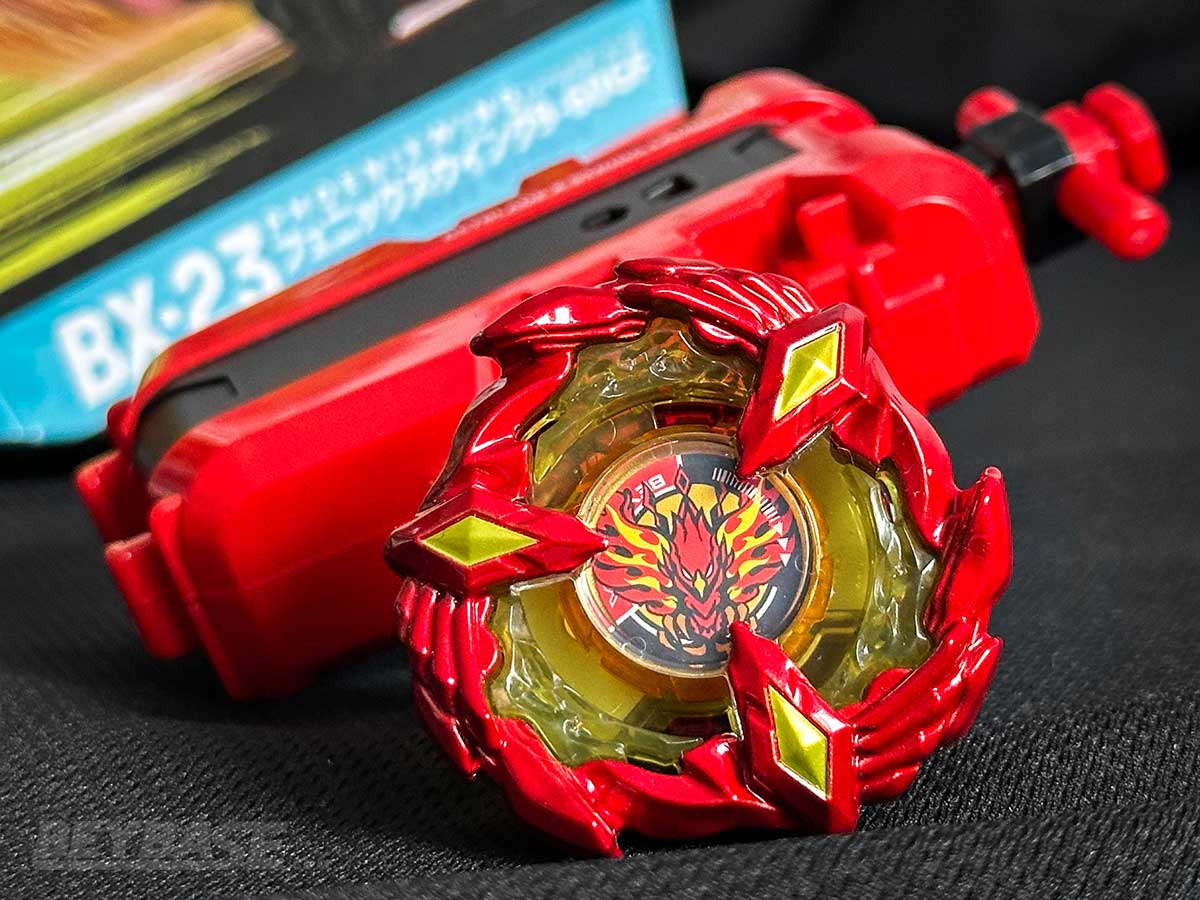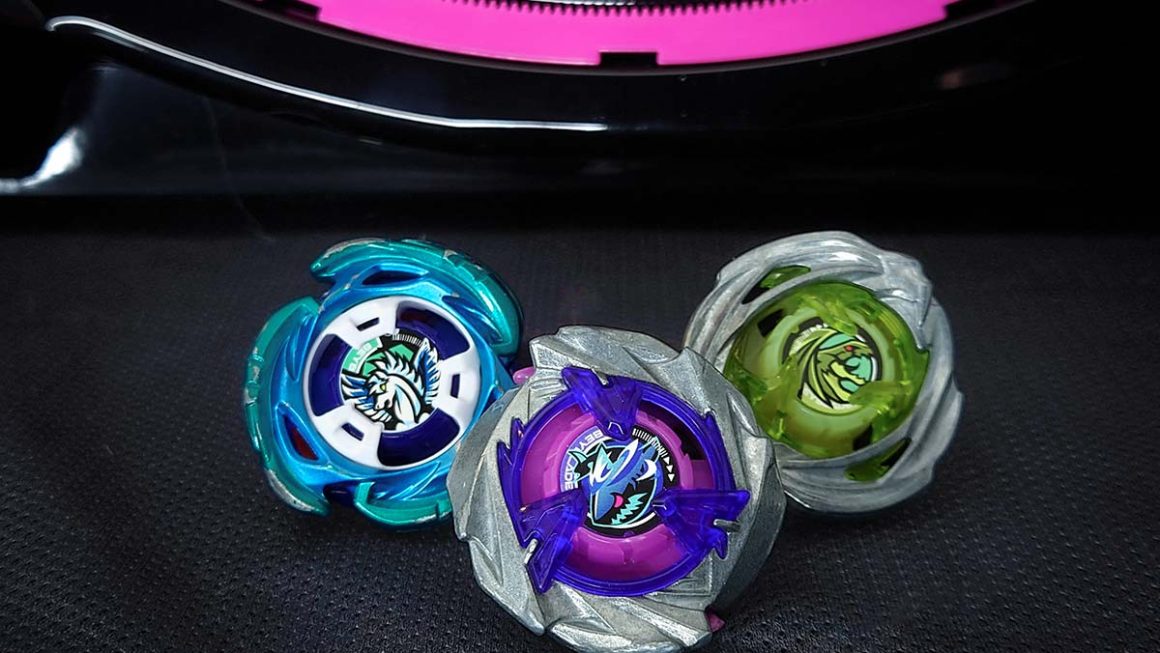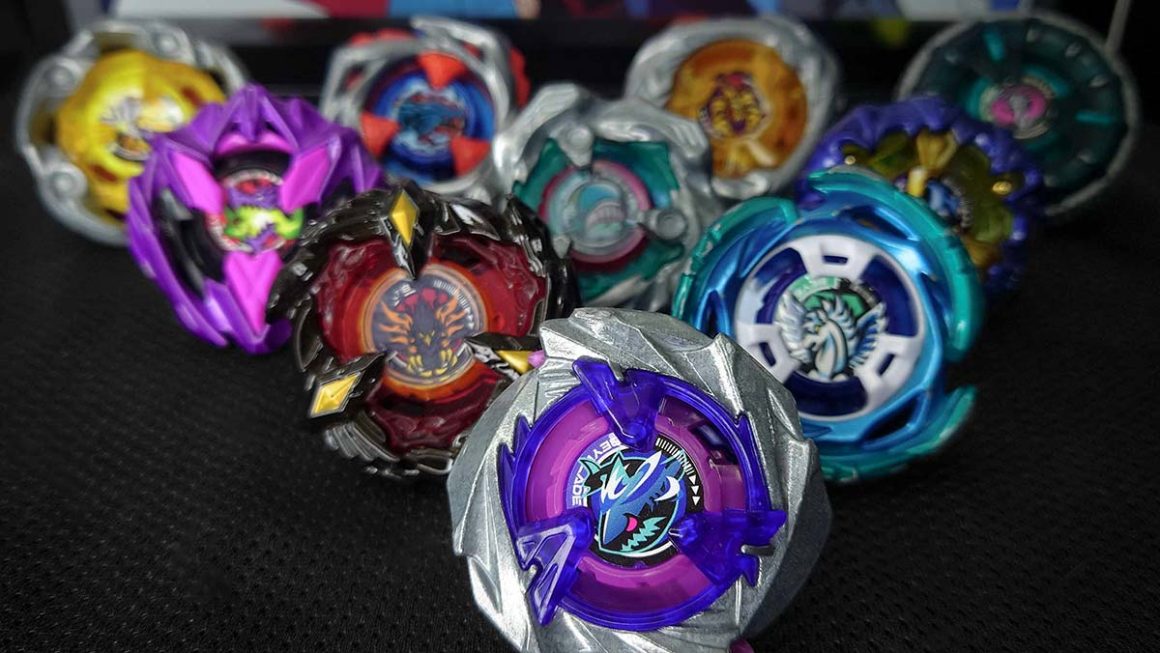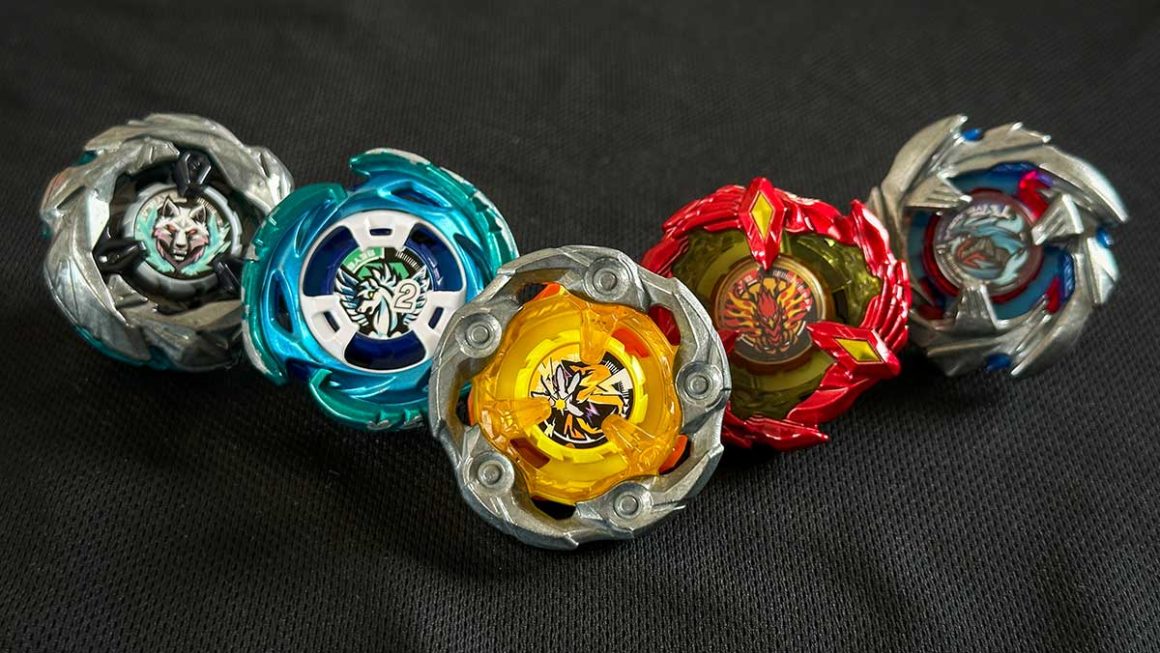Affiliate Disclosure: If you buy something through some of the links on this post, you won’t pay any extra, but we’ll get a small commission. This helps us keep things running. Thanks for your support!
Following its manga debut and promotional adverts, the release of BX-23 Phoenix Wing 9-60GF has been hotly anticipated, and for good reason. This release boasts as the first released Blade that can rival the Cobalt Drake Blade weight – 38 grams – without the Cobalt Drake Blade exclusivity.
While this does not seem like a lot relative to the weight of an X combo fully assembled, this is nearly a 10% increase in weight compared to the next-heaviest Blades clocking in at a high 34g or low 35g. The disparity only grows when Phoenix Wing Blade is compared to the non-top-percentile weighted Blades, making it a very scary option.
“How hard does this heavy-weight Blade punch?” has been the question on all Blader’s minds lately, and we sought to answer that question. Does it eclipse its weight-class rival and other existing Blade options?
Every single component of this Starter is all-new: the Phoenix Wing Blade, 9-60 Ratchet, and Gear Flat Bit. As such, we will testing each to see where they find themselves in the current Beyblade X competitive spectrum.
Summary
The BX-23 Phoenix Wing 9-60GF Starter provides Bladers with an incredibly powerful Blade, excellent Ratchet and fast Bit. Together, this stock combo is a dangerous one. Apart, you have a highly aggressive Blade in Phoenix Wing Blade, a highly versatile Ratchet with the 9-60 Ratchet, and a highly competent attack type Flat Bit alternative in Gear Flat Bit. It also includes the first non-set release of the String Launcher, a viable alternative to the traditional Winder Launcher.
The BX-23 Phoenix Wing 9-60GF Starter is a must-have for all competitive Bladers that want the strongest parts available to them.
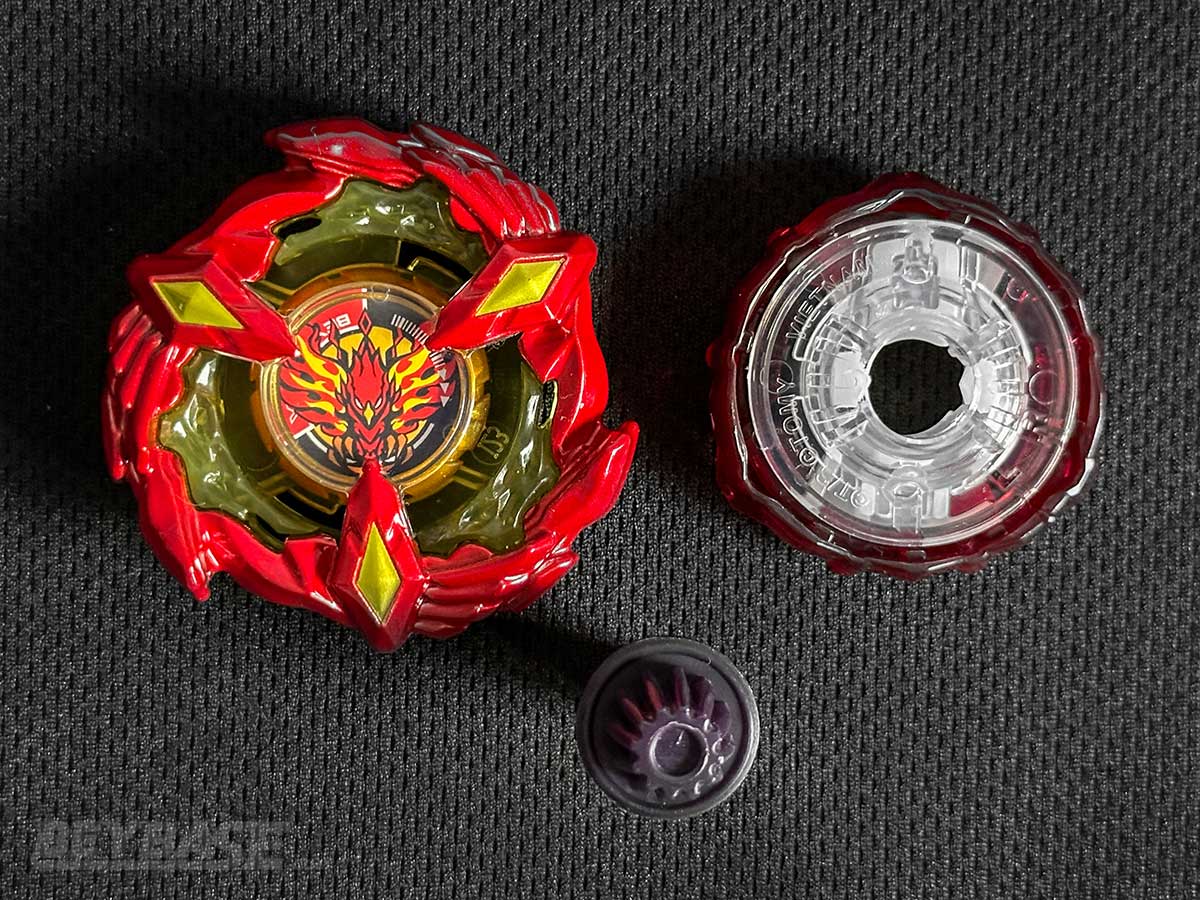
Parts Summary
Phoenix Wing Blade:
The Phoenix Wing Blade is an incredibly versatile Blade that easily rivals if not surpasses the Dran Sword Blade in terms of both raw Attack power and flexibility. A must-have Blade for competitive Bladers. Read More.
9-60 Ratchet:
The 9-60 Ratchet is a deceptively smooth and solid Ratchet that is best in class for Stamina, being able to produce less drag and precess longer to improve spin-time compared to its contemporaries. A must-have Ratchet for those that wish to optimize combos to the max or increase their Deck depth. Read More.
Gear Flat Bit:
The Gear Flat Bit is a slightly harder to control variant of the Flat Bit, with no concrete upside over other “Flat” options that exist. While it certainly brings enough speed to the table, and Xtreme Dashes well when mint, its difficulty to control makes it a hard choice in the face of easier-to-use Bits that provide the same performance. Read More.
Where to Buy BX-23 Phoenix Wing 9-60GF Starter
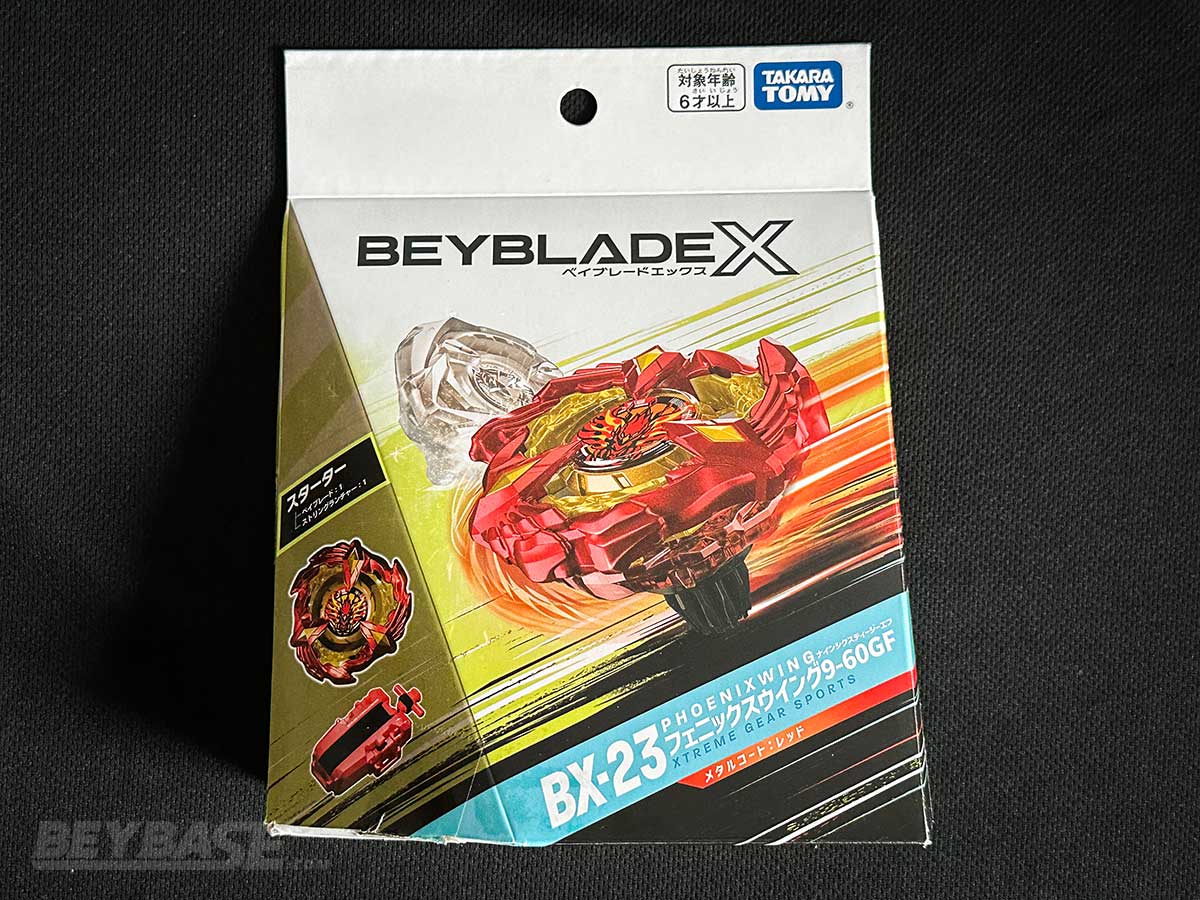
Heads up: If you buy something through some of the links on this post, you won’t pay any extra, but I’ll get a small commission. This helps me keep things running. Thanks for your support!
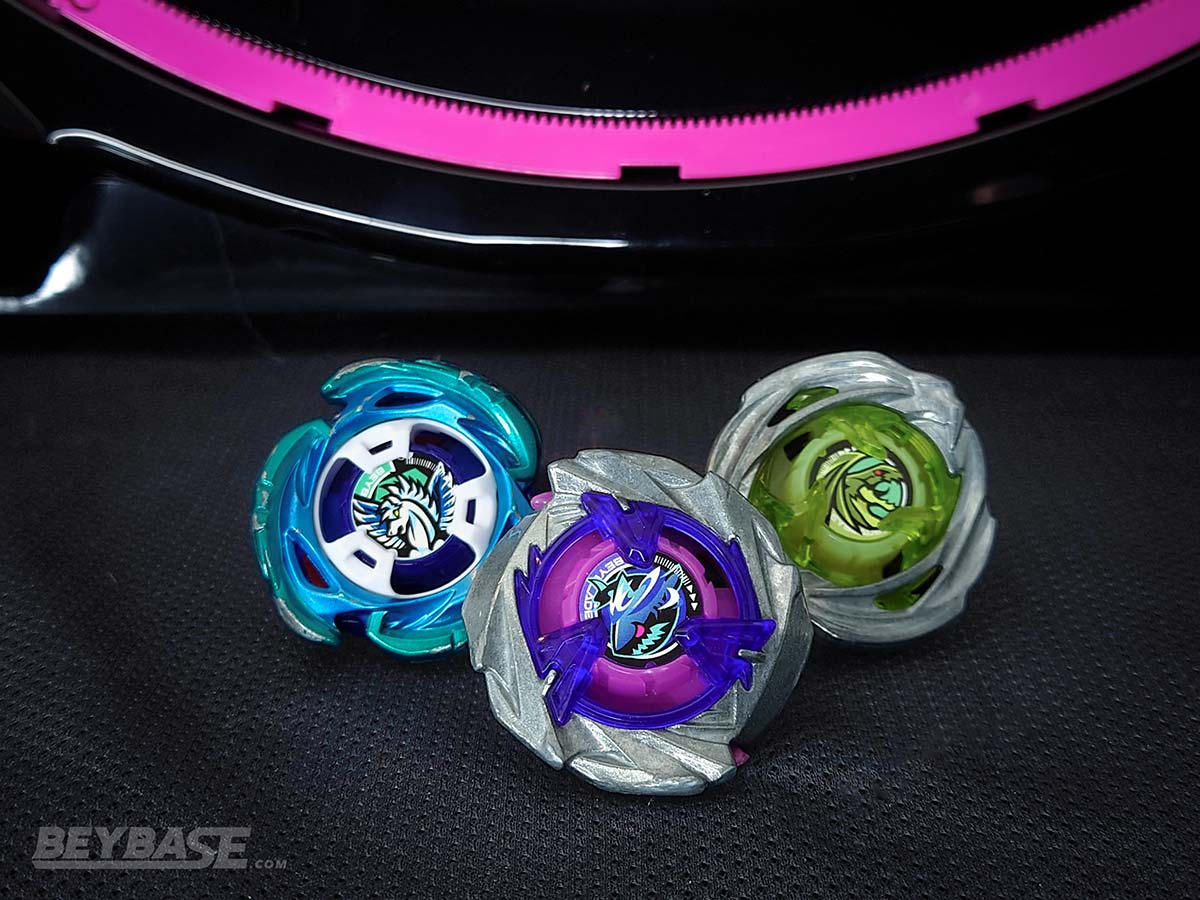
Become an expert with this player’s guide, featuring the best combos and strategies for the stadium.

Sponsored: Order the newest Beyblades at malloftoys.com!
Heads up: If you buy something through Mall of Toys, you won’t pay any extra, but I’ll get a small commission. This helps me keep things running. Thanks for your support!
Product Details
- Brand: TAKARA-TOMY
- Product Code:
- Product Contents:
- Phoenix Wing 9-60GF
- System: Gear Sports
- Series: Beyblade X
Part Weights
- Phoenix Wing Blade: 37.89g
- 9-60 Ratchet: 6.14g
- Gear Flat Bit: 2.26g
Testing Method Notes:
- All tests in this article were done in the BX-10 Xtreme Stadium using two Bladers.
- Matches saw both combos switch out Ratchets and Bits at the half-way point to account for part performance variation, as well as side switching and Blader switching.
- Launch style was a basic hard launch parallel to the stadium unless specified otherwise.
Phoenix Wing Blade Review
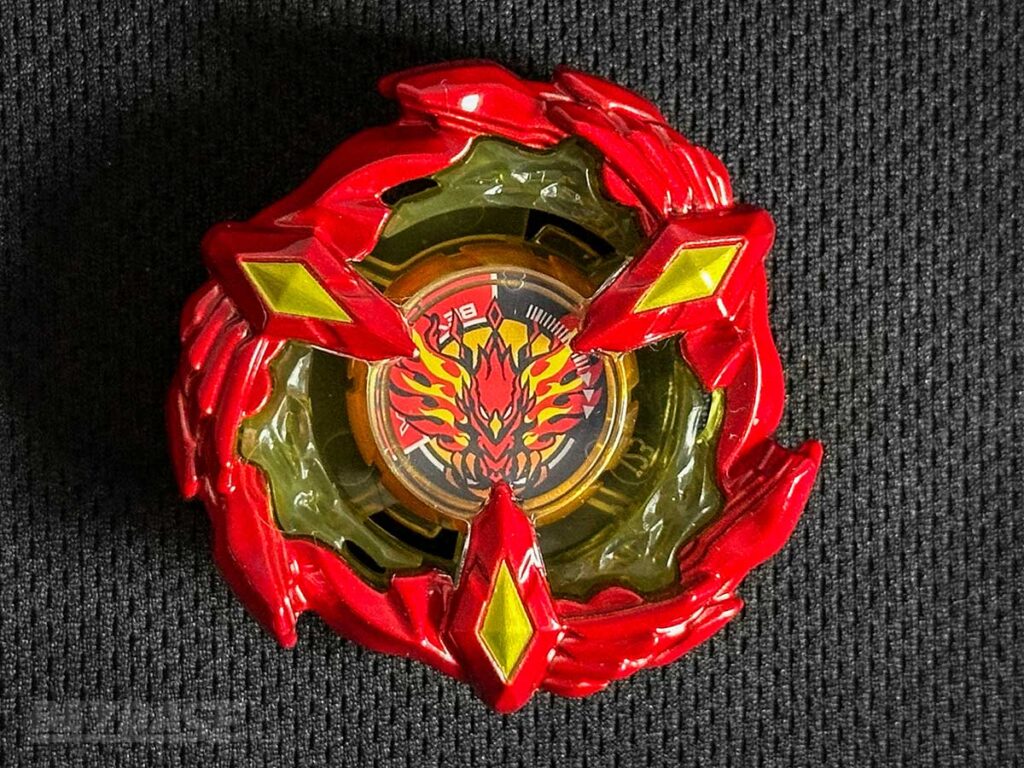
The Phoenix Wing Blade features three large, pointed protrusions with both outwards and upward projections. Phoenix Wing Blade is meant to be an evolution of the CoroCoro exclusive Phoenix Feather Blade released in the same month. You can learn more about the Phoenix Feather Blade in our Beyblade X Buyer’s Guide.
If the Phoenix Feather Blade reminds one of a lighter, sleeker Dran Sword Blade, then Phoenix Blade is the bulkier, tougher Dran Sword Blade.
Do these design cues translate into Dran Sword-like performance? We tested it to find out.
Is the Phoenix Wing Blade Good for Attack Combos?
Phoenix Wing Blade Attack Testing
Our first round of tests were against Knight Shield Blade on a docile combo. The Dran Sword Blade, especially when no longer mint, suffered against this Blade the most.
While the matchup was far from awful, it was definitely a sore point for Dran Sword Blade.
Phoenix Wing 5-60R vs. Knight Shield 5-60HN
- PW 5-60R wins: 6 wins, 12 points (1 XF, 4 KO, 1 OS)
- KS 5-60HN wins: 4 wins, 5 points (1 KO, 3 OS)
- Phoenix Wing Blade Win Percentage: 60%
- Phoenix Wing Blade Point Percentage: 71%
It is clear from these results that Phoenix Wing Blade finds Knight Shield Blade to be less of a problem, at the very least when in “unworn” condition (contact points not well-rounded through use). We noted that Knight Shield Blade struggled to bully back Phoenix Wing Blade in the same way it is able to against all other Blades.
This staunch quality to Phoenix Wing Blade is not only a result of its shape, which is decidedly aggressive, but also the sheer heft and weight it swings around. It is ~6g heavier than Knight Shield, with 32g being a fair estimate of the X Blade weight average across the board, making Phoenix Wing nearly 20% heavier and just that much harder to move.
While this isn’t the entire reason why Phoenix Wing Blade performed so well, it is certainly a contributing factor as being pushed around is one way an Attack Blade can lose. Phoenix Wing Blade lacks much of that weakness in this matchup.
Its highly aggressive design gives Phoenix Wing Blade comparable Smash Attack to Dran Sword Blade, and yet it remains stable and balanced enough to secure outspins as well, same as Dran Sword Blade can here.
Phoenix Wing 5-60R vs. Hells Scythe 5-60B
- PW 5-60R wins: 6 wins, 12 points (2 XF, 2 KO, 2 OS)
- HS 5-60B wins: 3 wins, 3 points (3 OS)
- Phoenix Wing Blade Win Percentage: 67%
- Phoenix Wing Blade Point Percentage: 80%
- 1 draw
Our next matchup is the ubiquitous Hells Scythe Blade on Ball Bit. While it doesn’t have the defensive prowess of Knight Shield Blade, it is a solid jack of all trades found in almost all metas regardless of regional preferences.
Here it is clear that Phoenix Wing Blade was able to demolish the Hells Scythe Blade combo both in terms of flat win percentage as well as points earned from a variety of win conditions.
Hells Scythe Blade simply stood no chance, and while it isn’t a dead-end matchup, you’d be hard-pressed to find someone that would willingly walk into this match as the Hells Scythe user.
From here we wanted to see how Phoenix Wing Blade does against other Attack combos. Given its weight and performance thus far it is more than clear that it joins top Attackers, but the question remains what nuance exists between them amongst each other directly.
In more simplified terms, if Phoenix Wing Blade performs excellently against Stamina and Defense combos like other top tier options, is it possibly even better by performing well directly against those options too? This would produce an incredible matchup spread yet to be seen in Beyblade X.
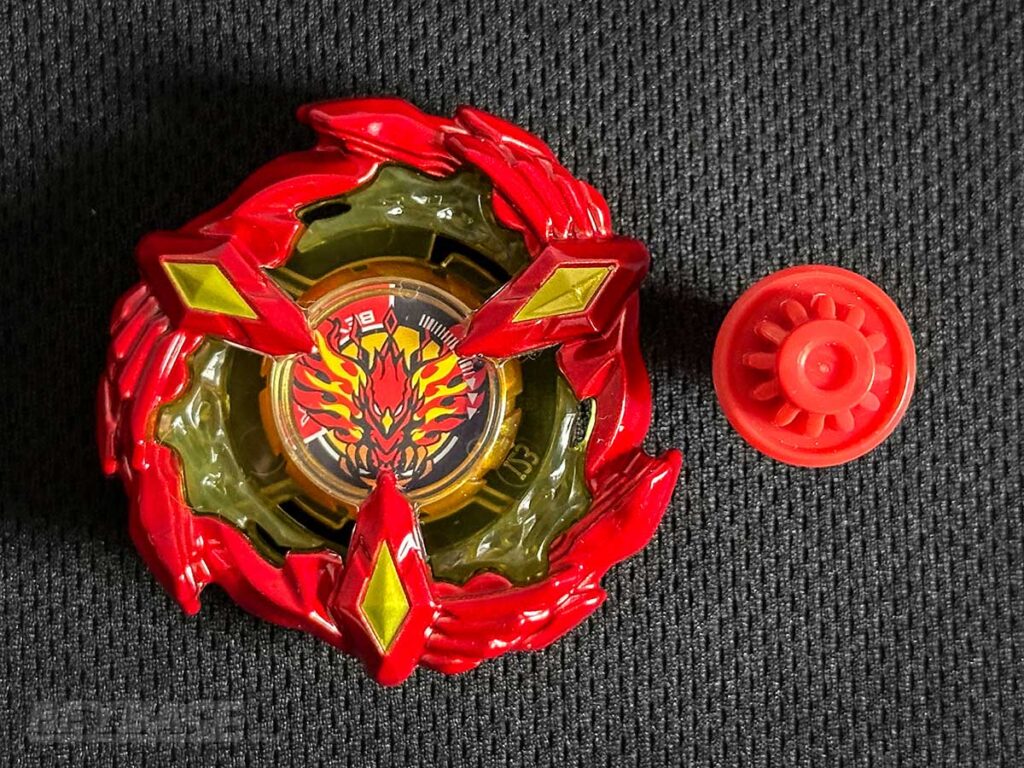
Phoenix Wing 5-60F vs. Dran Sword 5-60F
- PW 5-60F wins: 6 wins, 9 points (3 KO, 3 OS)
- DS 5-60F wins: 3 wins, 6 points (1 XF, 1 KO, 1 OS)
- Phoenix Wing Blade Win Percentage: 67%
- Phoenix Wing Blade Point Percentage: 60%
- 1 draw, worn Dran Sword Blade
Here we saw Phoenix Wing take a commanding lead in terms of flat win percentage, while things were just a touch closer in terms of points earned. This can be attributed to the fact that Phoenix Wing Blade was frequently resisting bullying from Dran Sword Blade, staying in the stadium, and then winning through its higher innate endurance – outspin victories.
In contrast, Dran Sword Blade could only consistently win via higher valued knock-outs, so staying in was not really an option to earn points.
One thing to note is that despite this weaker performance, a mint Dran Sword Blade may perform noticeably better as it has more raw Smash Attack at its disposal than a worn condition Blade. This may help it earn more knock-out victories to achieve parity.
Phoenix Wing 5-60F vs. Shark Edge 5-60F
- PW 5-60F wins: 5 wins, 8 points (1 XF, 1 KO, 3 OS)
- SE 5-60F wins: 5 wins, 10 points (1 XF, 1 BF, 2 KO, 1 OS)
- Phoenix Wing Blade Win Percentage: 50%
- Phoenix Wing Blade Point Percentage: 44%
Here we tried a mint Shark Edge Blade to help even out our worn Dran Sword Blade results. It is clearer here that the matchup between the Shark Edge Blade and Phoenix Wing Blade when both are mint is closer to even.
For much of the testing Phoenix Wing Blade had an undeniable lead, but towards the end Shark Edge Blade was able to secure a string of back-to-back wins. This is just the nature of the game when two aggressive Blades meet, and Phoenix Wing Blade doesn’t seem to buck that trend entirely as some may have worried.
With some more basic testing done to confirm the viability of Phoenix Wing Blade on more standard setups, we sought to determine its viability on other Bits. The Point Bit has been used successfully with Cobalt Drake Blade by players such as the Beyblade X X-Treme Cup G1 2023 Champion Mu-D (ムーD) in Japan, so naturally our minds gravitated towards it first.
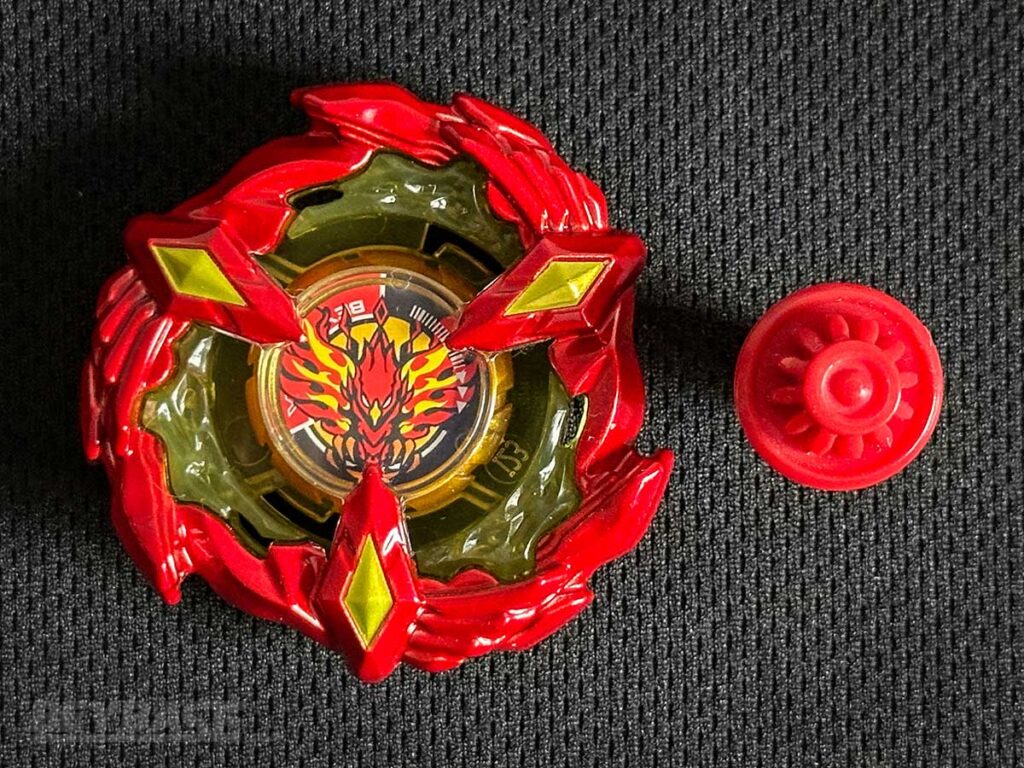
Phoenix Wing 5-60P vs. Hells Scythe 5-60B
- PW 5-60P wins: 7 wins, 11 points (1 XF, 2 KO, 4 OS)
- HS 5-60B wins: 2 wins, 3 points (1 BF, 1 OS)
- Phoenix Wing Blade Win Percentage: 78%
- Phoenix Wing Blade Points Percentage: 79%
- 1 draw
Here we saw a very convincing display of dominance from Phoenix Wing on the Point Bit. Compared to the matches done against Hells Scythe Blade using the Rush Bit, it is clear that the Point Bit afforded the Blade enough additional stamina to be able to more consistently outspin Hells Scythe Blade.
What we can glean from this information is that the Hells Scythe Blade combo cannot rely on simply managing to stay inside the stadium to win comfortably against Phoenix Wing Point as it can with most other combos.
Phoenix Wing 5-60P vs. Knight Shield 5-60T
- PW 5-60P wins: 6 wins, 9 points (2 BF, 1 KO, 3 OS)
- KS 5-60T wins: 3 wins, 5 points (2 KO, 1 OS)
- Phoenix Wing Blade Win Percentage: 67%
- Phoenix Wing Blade Point Percentage: 64%
- 1 draw
Probably one of the most effective counters to Attack type combos in the X metagame right now is using Knight Shield Blade on an aggressive Bit to stuff them. While it isn’t without risk, the aggressive Knight Shield combo is among the best and most consistent options to shut down attack.
Given the Point Bit provided Phoenix Wing Blade more endurance, we wanted to see if that impacted the ability of aggressive Knight Shield combos to secure wins, and it did so greatly.
Phoenix Wing Blade on Point Bit was able to rack up numerous out-spins over Knight Shield Blade as it has better stability at the end of the match, as well as comparable raw stamina. What this means is that Knight Shield Blade must go for the knock-out which is increasingly difficult due to the sheer weight difference between the two as noted earlier.
For those that want a better response to aggressive Knight Shield Blade combos shutting them down, it seems that the Point Bit and Phoenix Wing duo work well.
Phoenix Wing 5-60P vs. Hells Chain 5-60N
- PW 5-60P wins: 5 wins, 10 points (1 XF, 2 BF, 1 KO, 1 OS)
- HC 5-60N wins: 5 wins, 6 points (1 KO, 4 OS)
- Phoenix Wing Blade Win Percentage: 50%
- Phoenix Wing Blade Point Percentage: 62.5%
Finally we decided to put Phoenix Wing Blade to the final test – Hells Chain Blade. While Hells Chain Blade lacks the same defense as Knight Shield Blade, it brings additional stamina (and weight) to the table. If Knight Shield Blade’s results were because it couldn’t measure up to Phoenix Wing’s superior weight and balance, then Hells Chain Blade should cover that weakness nicely.
Here we saw that this was indeed the case. By setting up a combo with slightly reduced raw defense but superior endurance it became much tougher for Phoenix Wing Blade on the Point Bit to sail to victory by out-spin.
It is clear that while Hells Chain Blade did perform better into Phoenix Wing Blade, the Point Percentage differential between the two here was less than even. Phoenix Wing Blade secured more high valued wins than Hells Chain Blade could – it needs to make up for its lower valued win condition by higher volume, which it could not do here.
In general it seems that the Phoenix Wing Blade is a highly competent Attack Blade, rivaling if not surpassing even mint Dran Sword Blade entirely.
Is the Phoenix Wing Blade Good for Balance Combos?
With attack testing out of the way we decided to compare Phoenix Wing Blade to the Dran Sword Blade one more time. The Dran Sword Blade not only has stupendous attack, but it is highly versatile, seeing success on passive Bits as well.
Could the Phoenix Wing Blade also pull that off? Let’s get into the test results:
Phoenix Wing Blade Balance Testing
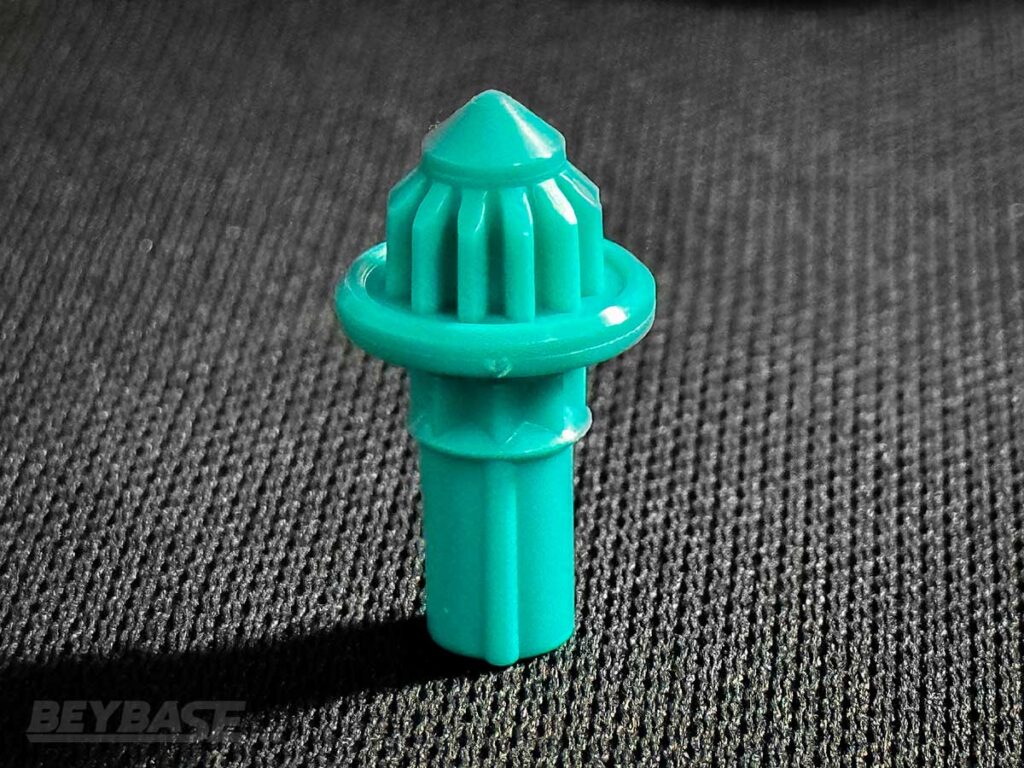
Phoenix Wing 5-60N vs. Knight Shield 5-60HN
- PW 5-60N wins: 5 wins, 9 points (1 XF, 2 KO, 2 OS)
- KS 5-60HN wins: 5 wins, 8 points (1 XF, 1 KO, 3 OS)
- Phoenix Wing Blade Win Percentage: 50%
- Phoenix Wing Blade Point Percentage: 53%
Compared to all that we had seen previously, these results were lackluster to say the least. In general it felt like Phoenix Wing was hampered by the complete lack of movement from the Needle Bit.
We know that the High Needle Bit, especially when worn down some, is more prone to movement while not sacrificing high endurance that the Phoenix Wing Blade can take full advantage of. So we switched to testing that instead.
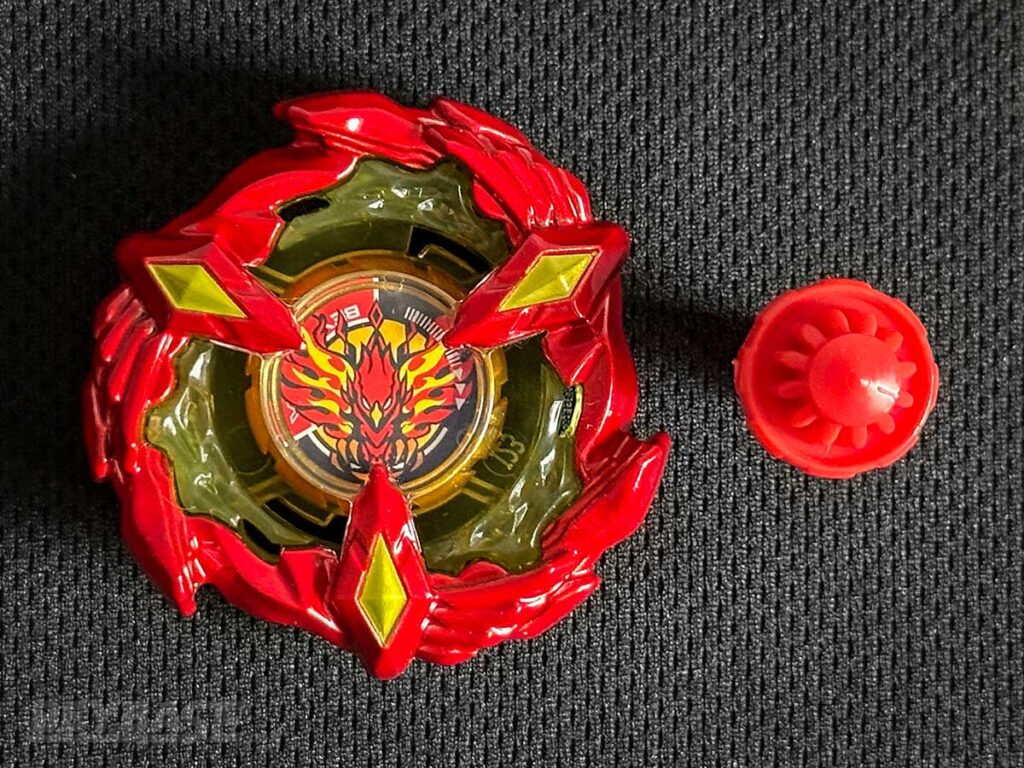
Phoenix Wing 5-60HN vs. Knight Shield 5-60HN
- PW 5-60HN wins: 7 wins, 13 points (2 BF, 4 KO, 1 OS)
- KS 5-60HN wins: 3 wins, 5 points (1 XF, 2 OS)
- Phoenix Wing Blade Win Percentage: 70%
- Phoenix Wing Blade Point Percentage: 72%
- Worn HN on PW, mint HN on KS
Here we saw that the High Needle Bit did indeed boost Phoenix Wing Blade’s ability to secure more knock-outs, and would recommend it over the regular Needle Bit. The added aggression during counter-attacks and increased endurance boost afforded to Phoenix Wing on this Bit should not be taken lightly.
Phoenix Wing 5-60HN vs. Hells Chain 5-60N
- PW 5-60HN wins: 6 wins, 11 points (1 BF, 4 KO, 1 OS)
- HC 5-60N wins: 4 wins, 7 points (1 XF, 1 BF, 2 OS)
- Phoenix Wing Blade Win Percentage: 60%
- Phoenix Wing Blade Point Percentage: 61%
- Worn HN Bit
Against another docile defense type it continues to be that the additional movement provided by High Needle Bit is just what Phoenix Wing Blade needed to go beyond a 50-50 in tougher matchups.
While these results are promising for Phoenix Wing Blade, it is also important to note that Hells Chain Blade on Needle was still able to secure the majority of out-spin victories over it.
This, along with previous performances, leads us to believe that the Hells Chain Blade may be the preferred “basic” answer to the Phoenix Wing Blade at this time. Even if those results are not scratching 50+%.
Phoenix Wing 5-60HN vs. Hells Scythe 5-60B
- PW 5-60HN wins: 7 wins, 12 points (1 XF, 1 BF, 2 KO, 3 OS)
- HS 5-60B wins: 3 wins, 6 points (1 XF, 1 KO, 1 OS)
- Phoenix Wing Blade Win Percentage: 70%
- Phoenix Wing Blade Point Percentage: 67%
- Worn HN Bit
Finally testing against the all-rounder combo Hells Scythe Blade on Ball Bit we see that Phoenix Wing Blade tends to come out on top with ease. Phoenix Wing Blade with the High Needle Bit make it difficult for Hells Scythe Blade to secure out-spins even if it survives the flurry of attacks at the start of battle.
The Verdict
The Phoenix Wing Blade is a competitive must-have. It has the strength and versatility to compare itself to Dran Sword and beyond. Its performance has shown that it is able to win with consistency against essentially anything that is thrown its way, on a variety of Bits. Frankly, you can’t really go wrong with the Phoenix Wing Blade at this point.
Best Phoenix Wing Blade Combo: Phoenix Wing 5-60 Point
Phoenix Wing 5-60 Point combo takes advantage of everything that makes Phoenix Wing great: weight, attack power, and stamina.
The usage of 5-60 Ratchet increases weight ever so slightly further and the overhang of the plastic outer piece adds a potential very slight defensive boost. And the Point Bit offers a strong mix of both attack and stamina. This allows it to win by not only Over, Burst, or Xtreme Finish, but Spin Finish as well in some situations.
Phoenix Wing can perform well on a lot of things and this particular variant isn’t necessarily the easiest to control or master, but assuming a strong user, it has the potential to be one of the best possible variants.
How to build Phoenix Wing 5-60P
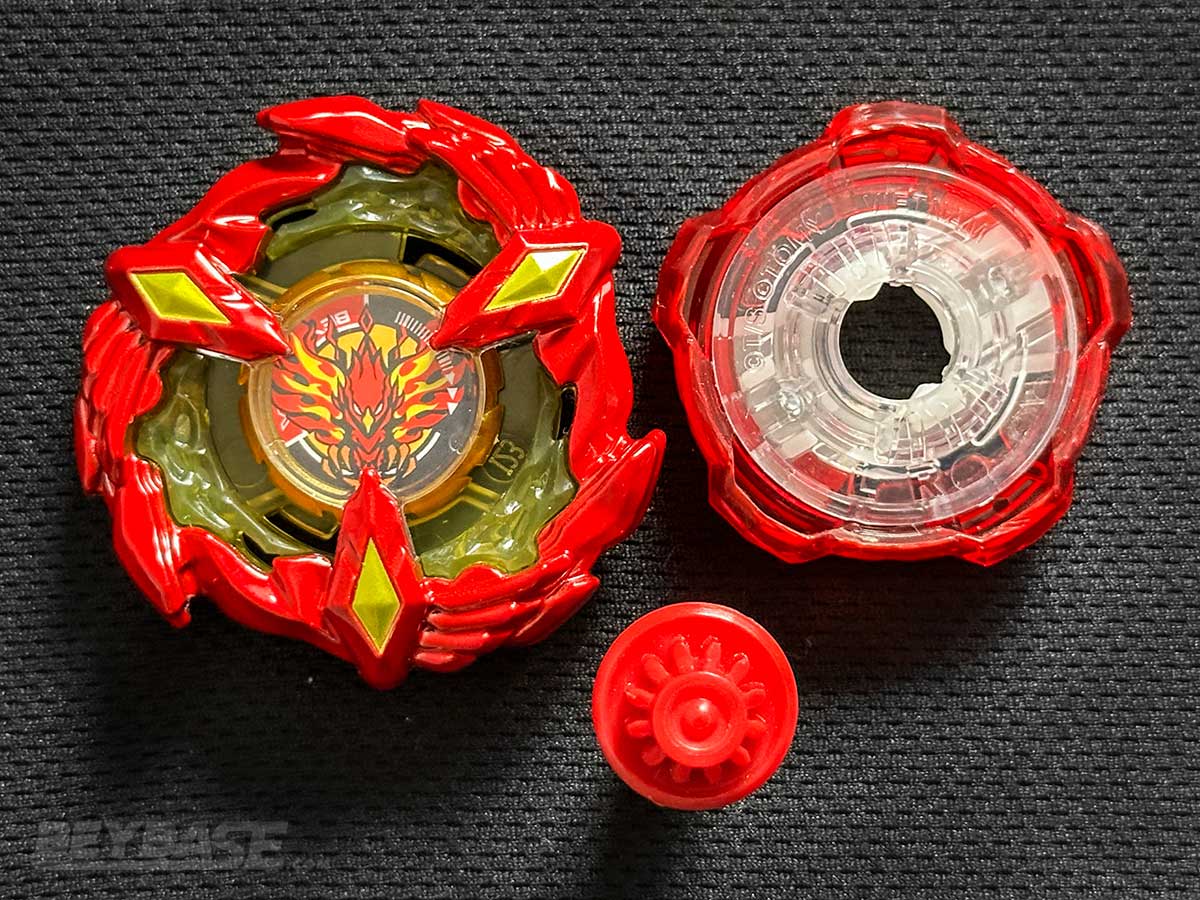
-
Phoenix Wing Blade
-
5-60 Ratchet (1 of the following)
-
Point Bit
9-60 Ratchet Review
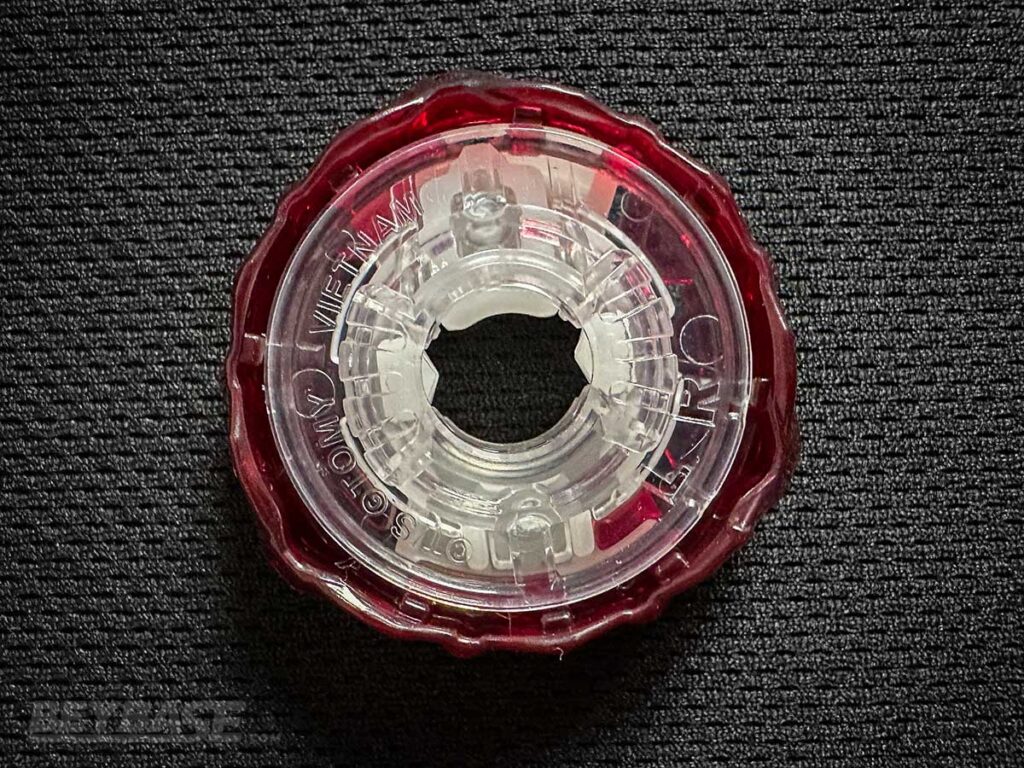
The 9-60 Ratchet is as the name implies a 9-sided Ratchet with a 6mm height.
Unlike all other Ratchets released so far, though, these sides are quite smooth, small, and thinly pointed. This results in 9-60 Ratchet taking up less lateral room than others.
The 9-60 Ratchet also doesn’t hang particularly low, making the possibility of contact with the Xtreme Line in battle less likely.
This makes 9-60 Ratchet a potentially impressive Ratchet for Stamina, Defense and Balance combos that all enjoy a reduced chance of Burst risk or reduced spin time.
How Burst Resistant is the 9-60 Ratchet?
To test its Burst Resistance we decided to put it up against the current top pick for reduced Burst risk chance: a worn 3-60 Ratchet. Using a high-recoil Blade and propping 9-60 higher up, we wanted to see if it would Burst more than its opponent.
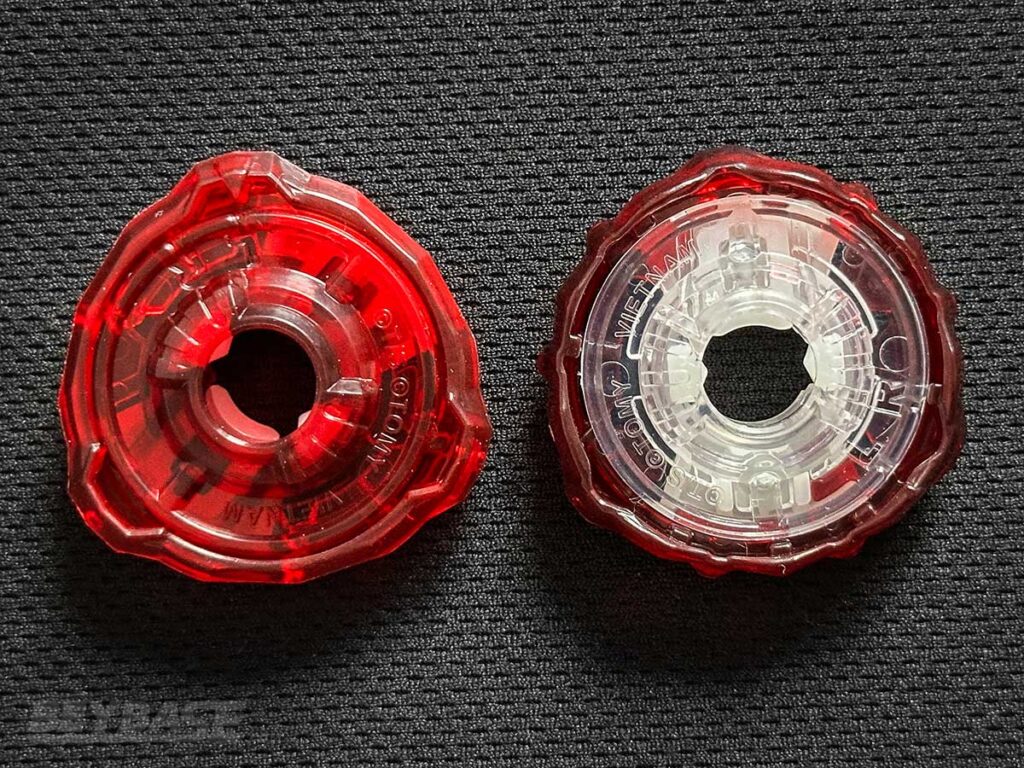
Hells Scythe 9-60HN vs. Hells Scythe 3-60N
- 9-60 Ratchet Outcomes: 0 Bursts, 10 Completions
- 3-60 Ratchet Outcomes: 1 Burst, 9 Completions
- 9-60 Ratchet Burst Finish/Separation Percentage: 0%
- 3-60 Ratchet Burst Finish/Separation Percentage: 10%
Funnily enough, the opposite happened. One would assume the higher up combo would be more prone to Bursting because there are more opportunities for direct Ratchet contact. Instead, 3-60 Burst from below.
While the above test can point to Burst Resistance prowess over the course of a match, we also decided to test out how Resistant both Ratchets are in the most Burst-prone matchup: against an Attack type.
Since we found that the Dran Dagger Blade was able to score Burst Finishes with frequency in our BX-20 Dran Dagger Deck Set Review, we thought it best to use that Blade to help come to a meaningful determination.
Benchmark: Hells Scythe 3-60HN vs. Dran Dagger 3-60LF
- 3-60 Ratchet Outcomes: 0 Bursts, 10 Completions
- 3-60 Ratchet Burst Finish/Separation Percentage: 0%
Hells Scythe 9-60HN vs. Dran Dagger 3-60LF
- 9-60 Ratchet Outcomes: 0 Bursts, 10 Completions
- 9-60 Ratchet Burst Finish/Separation Percentage: 0%
Interestingly enough, we didn’t experience a Burst Finish in either set of tests.
While it seems that on paper and in drawn-out fights the 9-60 Ratchet should have an edge in reducing Burst risk, against the kind of matchup where Bursting matters most there was no notable difference between the 9-60 Ratchet and 3-60 Ratchet.
We then turned our attention to other measurements afterwards rather than put 3-60 on HN Bit to compare, since we know now that it will at most be even with the 9-60 Ratchet if not outright inferior.
Is the 9-60 Ratchet Good for Stamina Combos?
Now that we know that the 9-60 Ratchet is reasonably “safe” if not ideal for Burst Resistance, we decided to take its condensed, smooth design to a solo spin test. Theoretically the 9-60 Ratchet should produce less drag and have higher LAD (Life After Death, the ability of a Beyblade to precess for some time) than existing options. Both qualities should mean a measurable difference in solo-spin time.
9-60 Ratchet Stamina Testing
9-60 vs. 3-60 Solo Spin Time Comparison
- Hells Scythe 9-60B: 2:45.74 Average Solo Spin Time
- Hells Scythe 3-60B: 2:36.18 Average Solo Spin Time
- Average Solo Spin Improvement: 9.56 seconds, ~4.05%
As it turns out, it did seem to perform better from the tests that we did. It is roughly a 4% improvement in spin time, though this kind of measurement varies from person to person and unique combo to combo.
As a rule of thumb we should assume that the 9-60 Ratchet performs generally well if not better than others in terms of raw spin time.
Is the 9-60 Ratchet Good for Defense Combos?
9-60 Ratchet Defense Testing
Benchmark: Hells Chain 5-60N vs. Phoenix Wing 5-60HN
- HC 5-60N wins: 4 wins, 7 points (1 XF, 1 BF, 2 OS)
- PW 5-60HN wins: 6 wins, 11 points (1 BF, 4 KO, 1 OS)
- 5-60 Ratchet Win Percentage: 40%
- 5-60 Ratchet Point Percentage: 39%
- Worn HN Bit
Hells Chain 9-60N vs. Phoenix Wing 5-60HN
- HC 9-60N wins: 4 wins, 8 points (1 XF, 2 KO, 1 OS)
- PW 5-60HN wins: 6 wins, 10 points (1 XF, 1 BF, 1 KO, 3 OS)
- 9-60 Ratchet Win Percentage: 40%
- 9-60 Ratchet Point Percentage: 44%
- Worn HN Bit
Unfortunately it seemed like the 9-60 Ratchet provided little relief from the onslaught that is Phoenix Wing Blade. Out spins were not less likely using the 9-60 Ratchet compared to the 5-60 Ratchet, so there seems to be little benefit to using 9-60 Ratchet over the 5-60 Ratchet.
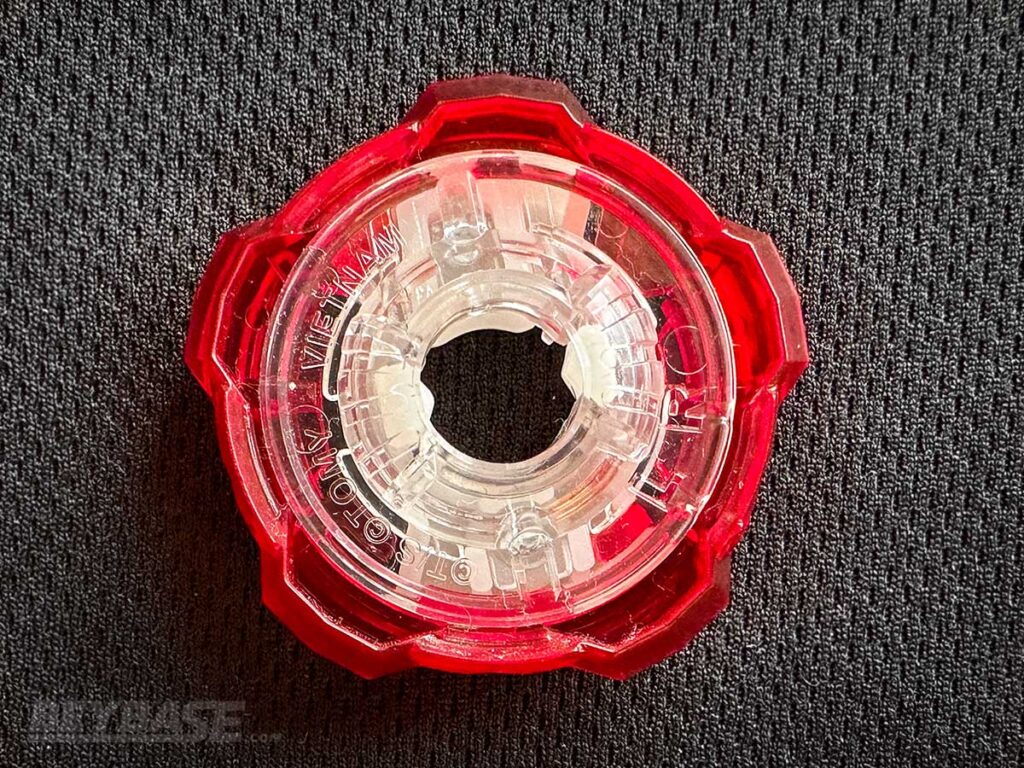
With that said, it still performed similarly enough that it shouldn’t be a bad choice for Defense combos. If you’d like to diversify your Deck further or prioritize differently, you should not be at a noticeable disadvantage swapping between the 5-60 or 9-60 Ratchet.
Is the 9-60 Ratchet Good for Aggressive HN Combos?
Given the prominence of High Needle on aggressive Blades it came to mind that the 9-60 Ratchet could further optimize those style of combos’ endurance through precession.
To test that idea out we used our matchup from earlier as a benchmark to see if there was a meaningful difference when we used 9-60 Ratchet rather than 5-60 Ratchet.
Benchmark: Phoenix Wing 5-60HN vs. Hells Chain 5-60N
- PW 5-60HN wins: 6 wins, 11 points (1 BF, 4 KO, 1 OS)
- HC 5-60N wins: 4 wins, 7 points (1 XF, 1 BF, 2 OS)
- Phoenix Wing Blade Win Percentage: 60%
- Phoenix Wing Blade Point Percentage: 61%
- Worn HN Bit
Phoenix Wing 9-60HN vs. Hells Chain 5-60N
- PW 9-60HN wins: 7 wins, 13 points (1 XF, 2 BF, 2 KO, 2 OS)
- HC 5-60N wins: 3 wins, 6 points (1 XF, 1 KO, 1 OS)
- Phoenix Wing Blade Win Percentage: 70%
- Phoenix Wing Blade Point Percentage: 68%
- Worn HN Bit
While the sample size is small, the results are promising. It appears as if the 9-60 Ratchet may have improved the HN combo’s odds to out-spin when compared to its performance on the 5-60 Ratchet.
It is clear that both options will serve you well and the difference is not astounding, it may help to know that a small improvement can be made to optimize this kind of combo just a touch more.
As with everything, these results should be taken with a grain of salt and not as gospel, instead consider seeing what configuration of parts works best among your existing collection.
The Verdict
The 9-60 Ratchet is excellent for all combo types and playstyles. It has a conservative, deceptively rounded design that lends itself to just about anything. Top tier Burst Resistance and improvement to spin times (and therefore outspin potential) are the main reasons one would pick this over other Ratchet options.

Sponsored: Order the newest Beyblades at malloftoys.com!
Heads up: If you buy something through Mall of Toys, you won’t pay any extra, but I’ll get a small commission. This helps me keep things running. Thanks for your support!
Gear Flat Bit Review
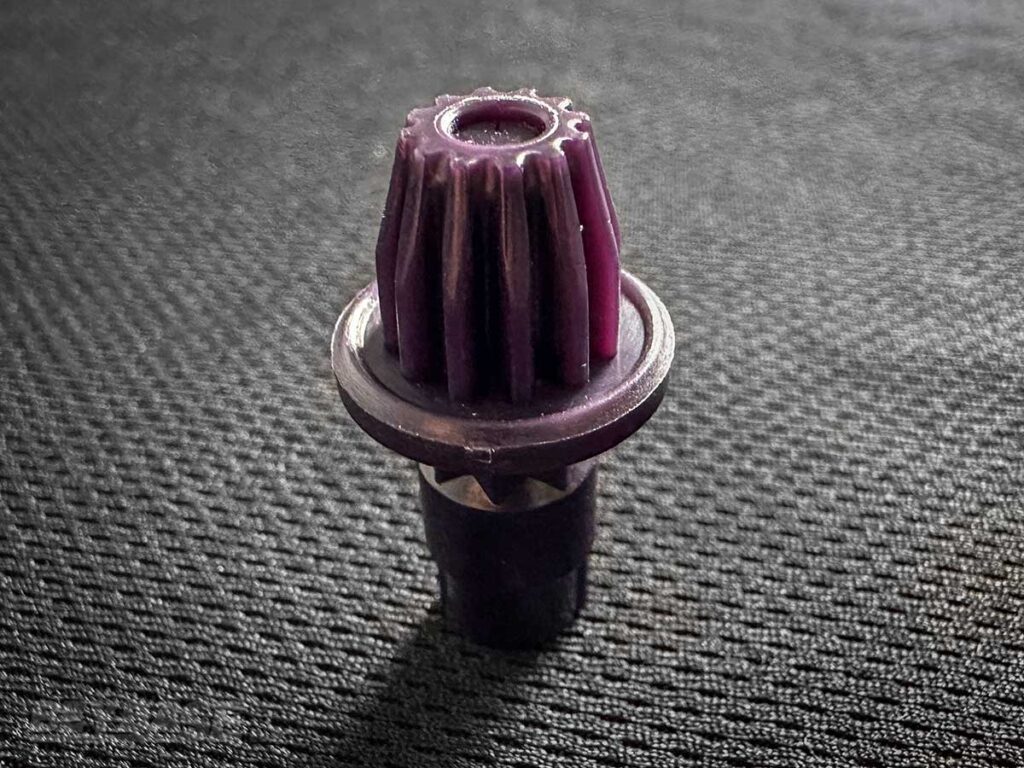
The Gear Flat Bit is a fully-toothed Flat Bit, meaning the teeth that normally surround the topmost part of the Bit extend all the way down to the base of the Flat tip.
The Gear Flat Bit is just a hair taller than the original Flat Bit, and it also features a slightly more pronounced indent at the center. It retains the high Burst Resistant shaft found on Flat-style Bits.
The Gear Flat Bit’s gimmick is that it will connect with the Xtreme Line with ease, and at a higher frequency compared to a ‘regular’ Bit. As it turns out, it is able to do so, but not without some drawbacks.
How Burst Resistant is the Gear Flat Bit?
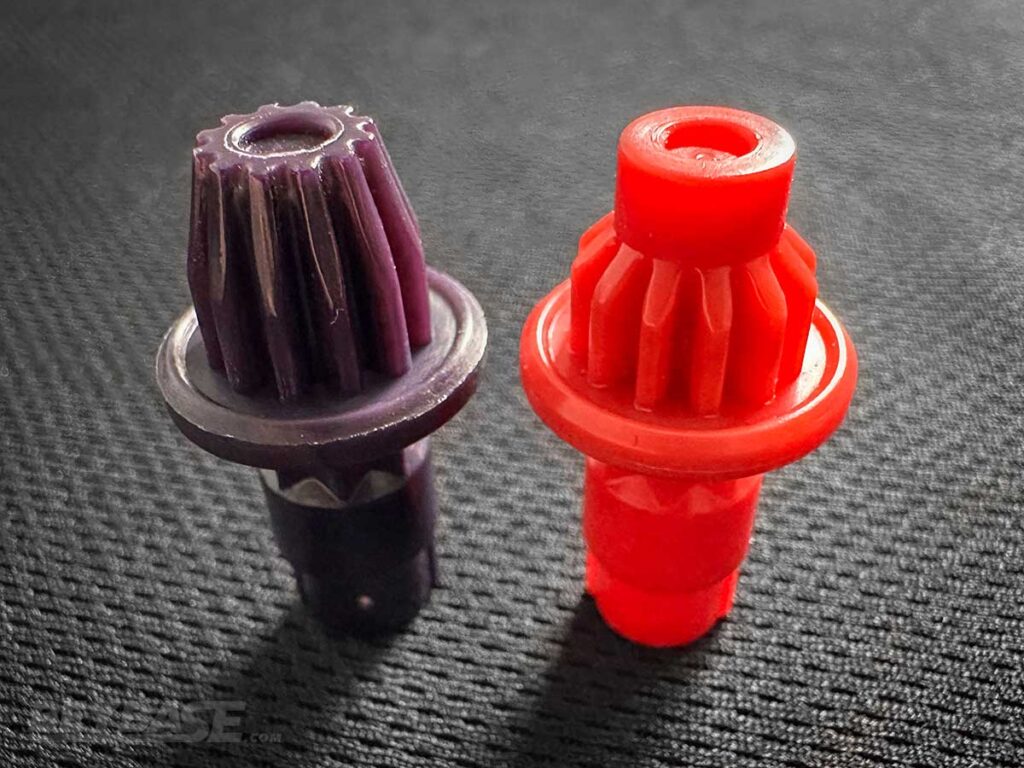
Hells Scythe 5-60GF vs. Hells Scythe 5-60F
- Gear Flat Bit Outcomes: 0 Bursts, 10 Completions
- Flat Bit Outcomes: 0 Bursts, 10 Completions
- Gear Flat Bit Burst Finish/Separation Percentage: 0%
- Flat Bit Burst Finish/Separation Percentage: 0%
Using two recoil-laden Blades against each other we found that while numerous huge hits were common, neither the Flat Bit nor the Gear Flat Bit experienced a Burst Finish. From this we can at the very least confirm that Gear Flat Bit’s design or performance has not negatively impacts its Burst Resistance.
Is the Gear Flat Bit Good for Attack?
Naturally the only reasonable niche for a Bit that focuses on as much Xtreme Line time as possible is in Attack combos. Because the use of the Xtreme Line invariably reduces a combo’s stamina, it does not seem wise to use the Gear Flat Bit for “anti-Attack” or mobile Defense set ups at this time.
Gear Flat Bit Attack Testing
Phoenix Wing 5-60GF vs. Knight Shield 5-60HN
- PW 5-60GF wins: 3 wins, 7 points (1 XF, 2 BF)
- KS 5-60HN wins: 6 wins, 11 points (1 XF, 3 KO, 2 OS)
- Gear Flat Win Percentage: 33%
- Gear Flat Point Percentage: 39%
Here we saw, for the first time, Phoenix Wing Blade struggle. Perhaps it is the slight adjustment to height or our inexperience with the Gear Flat Bit, but it seemed much less consistent than previously released Bits right off the bat.
One thing to note is that thanks to the high speed it seemed as if there were more chances to Xtreme Finish with Gear Flat Bit compared to previous testing, though these chances rarely bore fruit.
In general it seemed much harder to secure knock-outs with this Bit, and easier to propel oneself out instead, though this may change with time.
Phoenix Wing 5-60GF vs. Hells Scythe 5-60B
- PW 5-60GF wins: 8 wins, 17 points(1 XF, 3 BF, 4 KO)
- HS 5-60B wins: 2 wins, 5 points(1 XF, 1 KO)
- Gear Flat Win Percentage: 80%
- Gear Flat Point Percentage: 77%
Here we, for some reason, went back to regularly scheduled programming, with Phoenix Wing Blade trouncing on Hells Scythe Blade. In this matchup we noticed little difference compared to other Flat Bits, other than the additional risk to self-KO or self-XF.
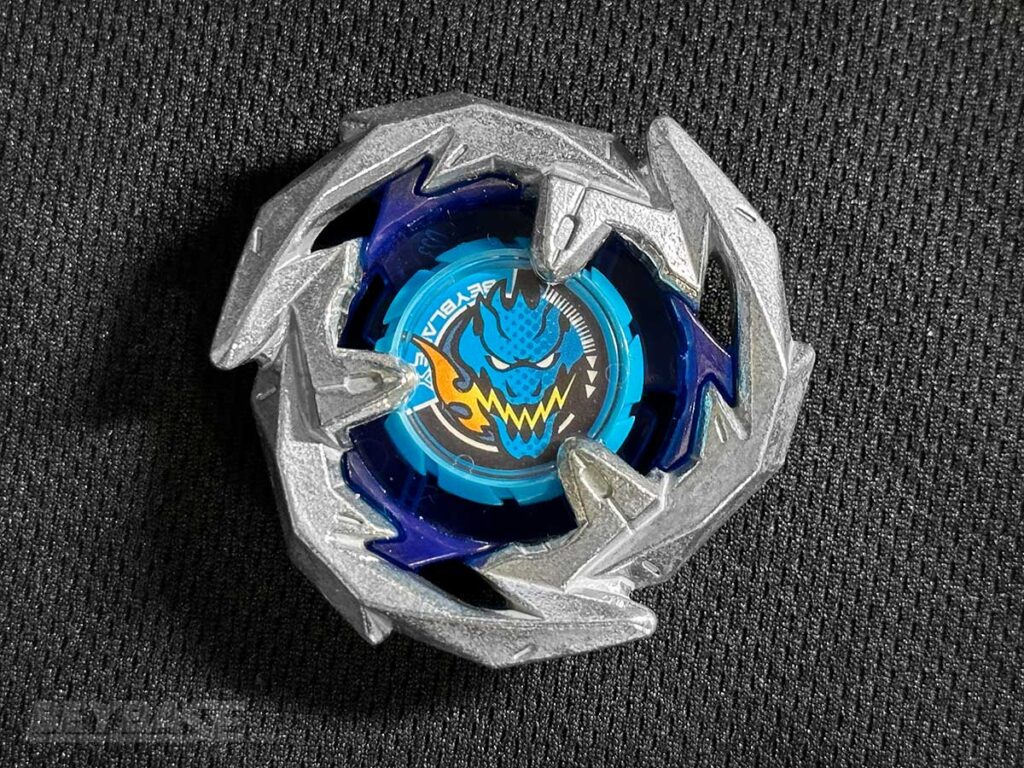
Dran Sword 5-60GF vs. Knight Shield 5-60HN
- DS 5-60GF wins: 3 wins, 8 points (2 XF, 1 KO)
- KS 5-60HN wins: 6 wins, 11 points (2 XF, 1 KO, 3 OS)
- Gear Flat Win Percentage: 33%
- Gear Flat Point Percentage: 42%
- 1 draw, worn Dran Sword Blade
We decided to see if this additional boost to power through increased Xtreme Line usage meant that older Dran Sword Blades could be brought back from near-irrelevancy. Unfortunately that seemed to not be the case here, with Dran Sword Blade giving an underwhelming performance on the Gear Flat Bit.
Dran Sword 5-60GF vs. Hells Scythe 5-60B
- DS 5-60GF wins: 6 wins, 12 points (1 BF, 5 KO)
- HS 5-60B wins: 4 wins, 4 points (4 OS)
- Gear Flat Win Percentage: 60%
- Gear Flat Point Percentage: 75%
This was just for good measure, and it seems like the Gear Flat Bit combo is capable of dealing with stamina oriented combos, but struggles against Defensive combos. This was in line with what we expect a Dran Sword Blade to do, in spite of the trouble surrounding the use of the Gear Flat Bit.
Our thoughts on the Gear Flat Bit is that it is an OK alternative to the regular Flat Bit, but doesn’t bring anything new to the table. If anything, it is a slight detriment in matchups against Defense types because it has reduced stamina compared to the original, so sneaking in an out-spin victory is even less likely.
The Verdict
The Gear Flat Bit is, at best, an alternative to the original Flat Bit. It has tremendous power, and we are certain that in the right hands it can produce excellent results, but don’t see a specific reason to use it over any of the other Flat-style Bits that are less troublesome to learn.
Should you buy the BX-23 Phoenix Wing 9-60GF Starter?
Without a doubt the BX-23 Phoenix Wing 9-60GF Starter is a must-buy for competitive Bladers. Both the Phoenix Wing Blade and the 9-60 Ratchet are best-in-class in their specific uses and the Gear Flat Bit is a fine Attack Bit option. Not to mention the included String Launcher, a first for a non-set release.
The Phoenix Wing Blade is an exceptional Attack type that also performs excellently in balance/stationary Attack combos. In a way you can treat this Blade as a heavier, improved upon Dran Sword Blade as they share all the same use cases.
The 9-60 Bit has an incredible design that lends it to most any situation. No matter what combo or style you’d like to use, you will find a use for the 9-60 Ratchet. It is that good.
The Gear Flat Bit, relative to the other parts, isn’t as astounding. It is a riskier but more powerful Flat Bit, though the Flat Bit already has more than enough power. You pay the price of its gimmick in increased stamina consumption, which can be a problem in some matchups. If for some reason you lack any of the Flat Bits, this is a good alternative.
Final Score: 9.5/10Where to Buy BX-23 Phoenix Wing 9-60GF Starter

Heads up: If you buy something through some of the links on this post, you won’t pay any extra, but I’ll get a small commission. This helps me keep things running. Thanks for your support!
What Do You Think of the BX-23 Phoenix Wing 9-60GF Starter? Comment Below!
If you’re thinking of picking up the BX-23 Phoenix Wing 9-60GF Starter or already have, comment below as we’d love to hear about your thoughts and testing experiences with it!
Or become a BeyBase HQ member to get early article access and behind-the-scenes updates. Thank you!

